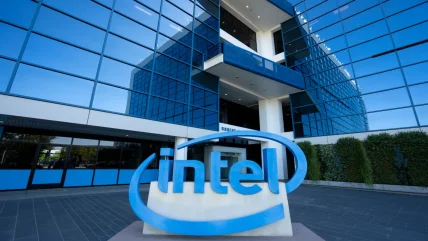
Intel has disclosed that its agreement with the US government for $7.86bn in subsidies under the CHIPS Act includes significant restrictions. These limitations pertain to the management and ownership of its chip manufacturing unit, Intel Foundry.
In September, chief executive Pat Gelsinger announced plans to restructure the company’s chip manufacturing operations by establishing Intel Foundry as a separate subsidiary. He also noted that the company was considering bringing in external investors to support the unit’s growth and operations.
The latest subsidy, part of a $39bn federal initiative to bolster domestic semiconductor production, is tied to strict conditions governing Intel’s operational and strategic decisions.
The US Department of Commerce (DOC) announced the subsidy earlier this week as part of its strategy to enhance domestic chipmaking and reduce reliance on foreign supply chains. Intel’s portion of the funding supports the development of 12 semiconductor fabrication and packaging facilities across Arizona, New Mexico, Ohio, and Oregon.
According to the chipmaker’s latest securities filing, it must retain at least 50.1% ownership of Intel Foundry if it transitions into a privately held entity. Should the unit go public, Intel is further restricted from selling more than 35% of the subsidiary to any single shareholder unless it remains the largest shareholder. Any breaches of these conditions would require prior approval from the Department of Commerce to continue receiving federal support.
The Direct Funding Agreement, signed on 25 November 2024, provides Intel with $7.8bn in direct funding and an additional $65m for workforce development. These funds are contingent on the chipmaker achieving specific project milestones, including facility construction, equipment installation, wafer production, and the acquisition of external foundry clients. The funding is reimbursed retroactively based on expenses already incurred by Intel once benchmarks are met.
“The DOC will disburse the Awards funding to Intel based on the achievement of various milestones, with each disbursement reimbursing Intel for eligible uses of funds already incurred and paid by Intel or its subsidiaries,” said Intel, in the securities filing. “Disbursements are Project-specific and subject to the achievement of various capital expenditures, facility completion, process technology development, wafer production, Intel products insourcing and external foundry customer acquisition milestones, the receipt of applicable permits and other governmental approvals, and various other conditions.”
Commitments to research and operational restrictions
The agreement also requires Intel to invest at least $35bn in US-based semiconductor research and development between 2024 and 2028. Additionally, Intel is prohibited from using equipment manufactured by certain foreign entities and from expanding chipmaking capacity in specified countries. Restrictions are also in place regarding joint research and licensing with designated foreign organisations.
A revenue-sharing clause tied to project returns adds another layer of oversight. If a funded project generates cash flow exceeding defined thresholds, Intel must share a percentage of these returns with the Department of Commerce. This requirement, capped at 75% of the subsidies received for the project, applies for up to nine fiscal years after a project achieves profitability.
Significant penalties may apply for non-compliance, including repayment of subsidies, suspension of funding, or termination of the agreement. Scenarios such as unauthorised changes in ownership or bankruptcy could trigger these measures, reinforcing the stringent conditions tied to federal support.
Recently, Intel shared a positive revenue forecast for the fourth quarter of 2024, anticipating revenues between $13.3bn and $14.3bn. The company attributed this expected growth primarily to stronger earnings from its personal computer (PC) and server operations.
In the third quarter of 2024, Intel’s revenue surpassed analysts’ expectations. However, the company reported a substantial net loss of $16.6bn, excluding losses related to non-controlling interests. The loss was largely attributed to impairment and restructuring charges incurred during the quarter.






